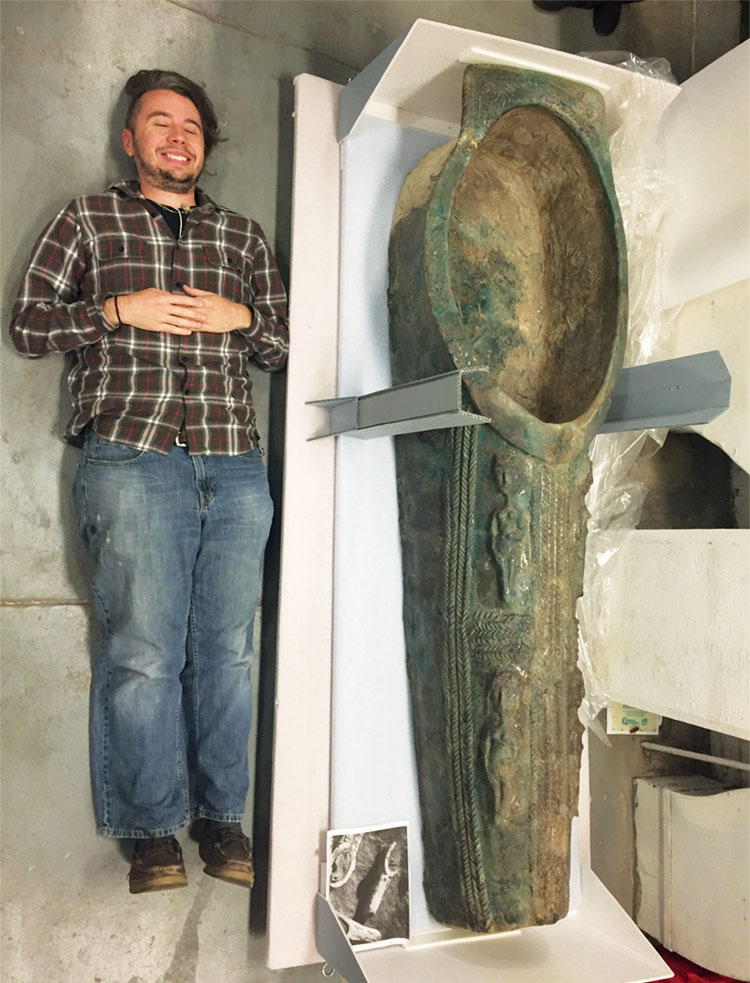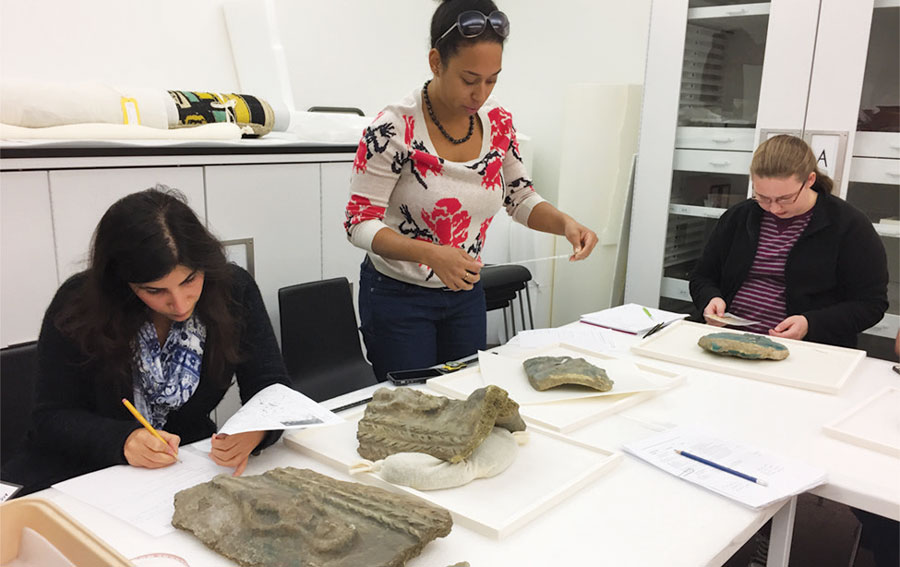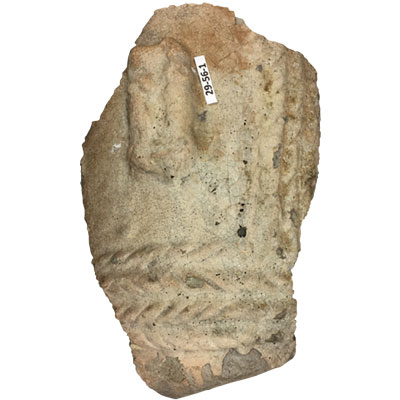
The opportunity to analyze, with my students, amazing glazed ceramic coffins from Nippur—some of the iconic objects featured in the Middle East Galleries—was an offer I could not pass up. This type of “slipper” coffin—named for its distinctive shape that tapers toward the foot like a slipper—dates to the Parthian period and was introduced to Nippur in the 1st century BCE. The Penn Museum has three complete slipper coffins from the 1890s excavations at Nippur, along with about 30 fragments of other coffins.

Such large ceramic objects are fairly complex to build and require specific skills and know-how, which can be demonstrated by a detailed reconstruction of the production sequence. As a class project, undergraduate and graduate students at the Center for the Analysis of Archaeological Materials (CAAM) conducted the tech-nological analysis of the coffins. Students focused their efforts on acquiring macro-, micro- and nano-scale data on raw materials, forming techniques, glazing, and firing processes.
As an introduction to the coffins, the students under-took detailed macroscopic observations of their assigned coffin piece: measuring the thickness of the fragment, color-coding the clay body and glazed surface, describing the applied decoration (i.e. molded female figures and a rope pattern), and identifying surface features of manufacture.

Then they looked at coffin samples under a microscope. They gathered data on the mineralogy of inclusions, as-sessed the amount of chaff that was added as temper, and provided insights on the temperature range used to fire the ceramic body. In addition, students assessed the degree of alteration of the glaze. For the glaze composition, the class turned to elemental analysis using energy-dispersive spec-trometry (SEM-EDS), confirming that the Nippur glazes, in line with Parthian tradition, are of a soda-lime-silica composition, with copper as the colorant.
Analysis of the forming techniques and the sequence of construction was conducted by detailed observations of the interior and exterior surfaces to identify seams, luting (an extra layer of clay), and areas where the molded decoration was applied. Further data on manu-facturing was acquired with x-ray radiography, a non-invasive tech-nique. The students determined that the coffins were assembled using large slabs. The seams, which show up on x-ray images, are not visible macroscopically as some are located under the decora-tion while others are covered up by luting or by the glaze. In the end, this scientifical-ly based case study allowed the CAAM students to integrate and apply archaeo-logical science to complex research questions. The knowledge gained through the project has prompted the completion of the analysis and continuance of research into how the production of slip-per coffins was organized at Nippur.

The Slipper Coffin Project was initiated by Richard L. Zettler, Ph.D., and Katherine Blanchard, respectively Associate Curator-in-Charge and Fowler/Van Santvoord Keeper in the Near East Section. CAAM’s Marie-Claude Boileau and Moritz Jansen guided students through the analytical study, helped by conservators Julia Lawson and Tessa de Alarcon. Special thanks go to the Fall 2016 students enrolled in ANTH 221/521 Material World in Archaeological Science who applied their newly acquired analytical skills to the study of the Nippur coffins, and to Evan Oxland, a graduate student who pursued the mineralogical analysis of these coffins in CLST 512 Petrography of Cultural Materials in Spring 2017.
MARIE-CLAUDE BOILEAU, PH.D., is Laboratory Coordinator and Teaching Specialist for Ceramics at CAAM.

